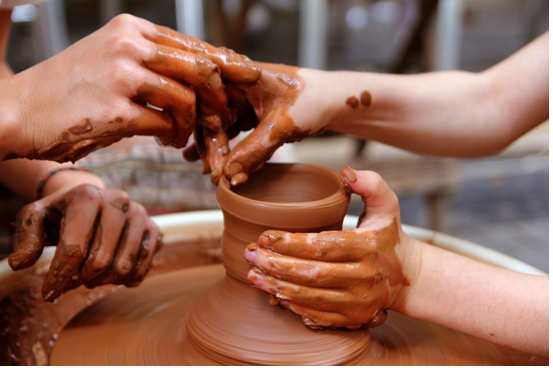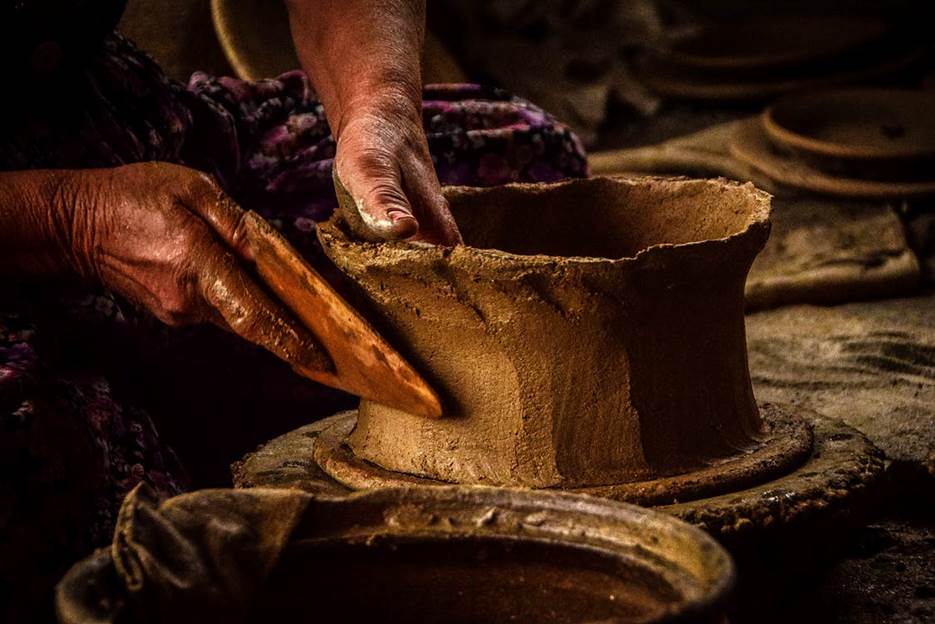Pottery, The Satisfying Art Form
Pottery, The Satisfying Art Form
Pottery has been around since time immemorial and it is still as widely used today as when the first potter’s wheel was invented. Today, beautifully handcrafted pottery pieces such as cups, carafes, mugs, vases, dispensers and other utensils are a symbol of class and taste. They can be used as exclusive decoration pieces or even as actual products that you may use on a day to day basis.
For pottery makers, the clay is never boring. After all, there is always more to try out, to explore, and to create.
But clay is an artform and like all arts it takes some practice before one creates beautiful clay goblets, clay carafes, and other pieces of handmade pottery.
Using the Right Clay
Deciding on what kind of clay to use is an important starting point. Different types of clay need to be baked at different levels of heat in order to take permanent shape. knowing the type of clay to use is important and then the right temperature kiln is next.
o Earthenware
Earthenware is considered to the lowest firing clay and it does not require a high temperature before it matures. Since it requires the least amount of energy, it won’t increase your costs too much.
The key trait of this type of clay is its higher porosity because of which it cannot be used in dishwashers and microwaves. If you put an earthenware clay pot full of liquid in a microwave oven, the water absorbed in the clay might cause cracks while it is being heated. However, glazed earthenware does not have these issues and it is generally considered safe for use in the microwave. That said, these usually are not dishwasher safesafe and it is advised to wash delicate pottery by hand.
o Stoneware
Stoneware is not a specific type of clay, but it consists of several different types of clay that range in color from off white to buff tan. Stoneware objects can even be red or speckled. The mugs, plates, and other items made of stoneware are generally suitable for use in microwaves and dishwashers. In fact, this clay is used create to create entire tableware sets.
o Porcelain
This is the highest firing clay available. Porcelain is one of the finest ceramics around. The fine nature of this clay results in some of the finest handmade pottery available today.
Equipment
You will definitely need to find a kiln if you are serious about handcrafting pottery. This holds particularly true if you are interested in making vases, tableware, mugs or other stuff that will be used. Local pottery studios usually have a range of kilns available, providing temperature ranges for most common types of pottery (2336°F).
A pottery wheel, is one of the most common potters tool and also one of the most difficult to master in order to mold your clay into different artistic shapes. It takes time and patience to master the skill but once mastered the end result can be gorgeous works of art literally taking shape under skillful hands!
The Ideal Working Environment
Pottery clay should always be best kept in a separate room. This is because clay dust is extremely fine and it can spread all over the house. You cannot get rid of it by running a vacuum cleaner over it and if people in your house are allergic to dust, their allergies will only get worse. The best place for working with clay should have the following:
- A floor that is impervious to water and also very easy to clean
- Easy access to fresh water
- A small but sturdy table
- Shelves for unfinished drying pots
Pottery provides as satisfying artistic outlet for all agesenter the world of pottery—a world where you would find delight in ancient art form.





